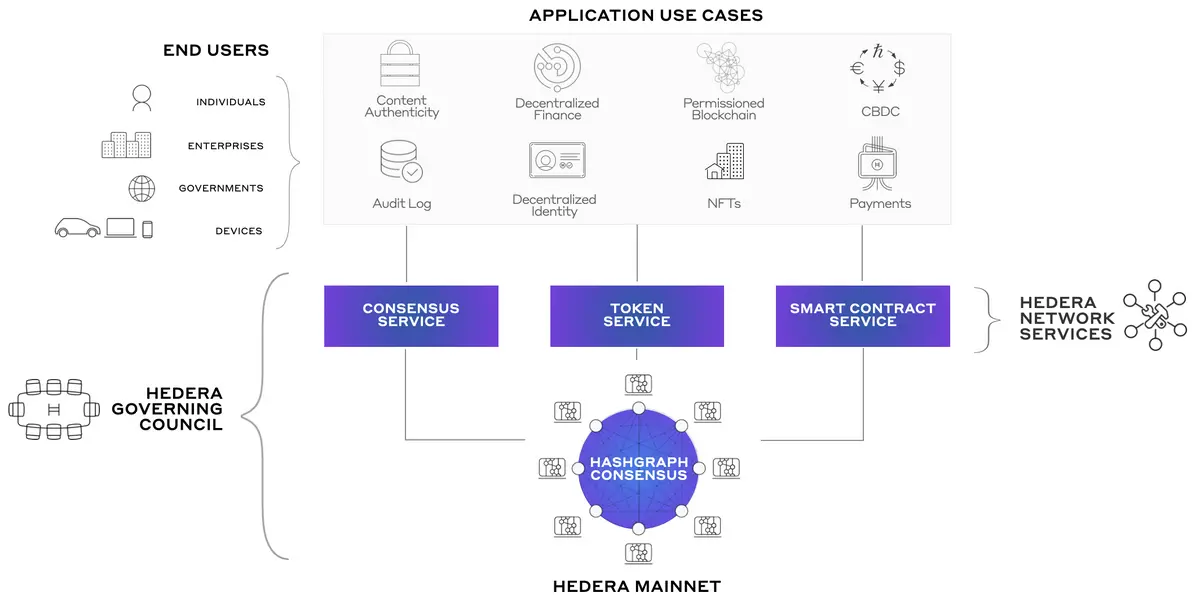System
Even though the common understanding may appear that the Sigmaswap is just a group of smart contracts, there is a stack of technologies in order to build the platform and serve the use of it as the most efficient.
Layer 1: Hedera HTS
Since Hedera is a hashgraph and is not a native 1EVM-based network like many other blockchains, it requires unique methods of development to optimize its performance. There are three services at the time of writing: Hedera Consensus Service (HCS), Hedera Token Service (HTS), and Hedera Smart Contract Service (HSCS). However, the speed performance of each one is significantly different. The consensus and token service can achieve 10,000 TPS while the smart contract is only at hundreds. The reason behind is because the smart contract service is not built in the same layer as others. Besides, Hedera consensus service and token service offer Asynchronous Byzantine Fault Tolerant (ABFT) security that guarantees the correctness, finality, and liveness of a consensus algorithm. Therefore, the majority of tokens built on Hedera is 2HTS
Learn more about the network is strongly encouraged.

Retrieved from https://hedera.com/learning/hedera-hashgraph/what-is-hedera-hashgraph
Layer 2: Smart Contract
Since Hedera accomplished the integration of smart contracts to the network. It allows developers to build decentralized applications more efficiently. Sigmaswap's contracts consist of multiple 3Solidity files, each one for each feature. These contracts are designed to manage liquidity and operate the entire platform automatically. Some contracts are not accessible by external parties. They can only be called by other contracts of Sigmaswap for a security justification. Smart contracts are also used to manage tokens as tokens are no longer a contract like 4ERC20 anymore.
Layer 3: Price Oracle
Oracle facilitates the data-feeding process from off–chain to on–chain and vice versa. Those data are vital for smart contract execution, for example, query, verify, and provide a network with off-chain data. Sigmaswap purposely built an oracle to retrieve token prices in the pools for price change reports. On top of that, these collected data assist traders to make their trade decision since it will be shown before (prediction) and after (consequence) executions.
Explore Sigmaswap Oracle.
Layer 4: Hedera SDK
A completed set of tools to interact with Hedera network, written in GO, Java, and JavaScript. Link
Layer 5: Wallet
Any wallet that supports Hedera network can be used to interact with Sigmaswap.
HashPack is the recommended by the advantage of convenience.
Layer 6: Web Application
An application interface designed to serve end users to transact on Sigmaswap with ease.
1 EVM : The Ethereum Virtual Machine allows for DApp creation and enables code execution for smart contracts.
2 HTS : Hedera Token Service allows developer to create both fungible and non-fungible tokens on Hedera.
3 Solidity : A programming language to create smart contracts and interact with EVM.
4 ERC20 : ERC20 tokens are fungible tokens on Ethereum.